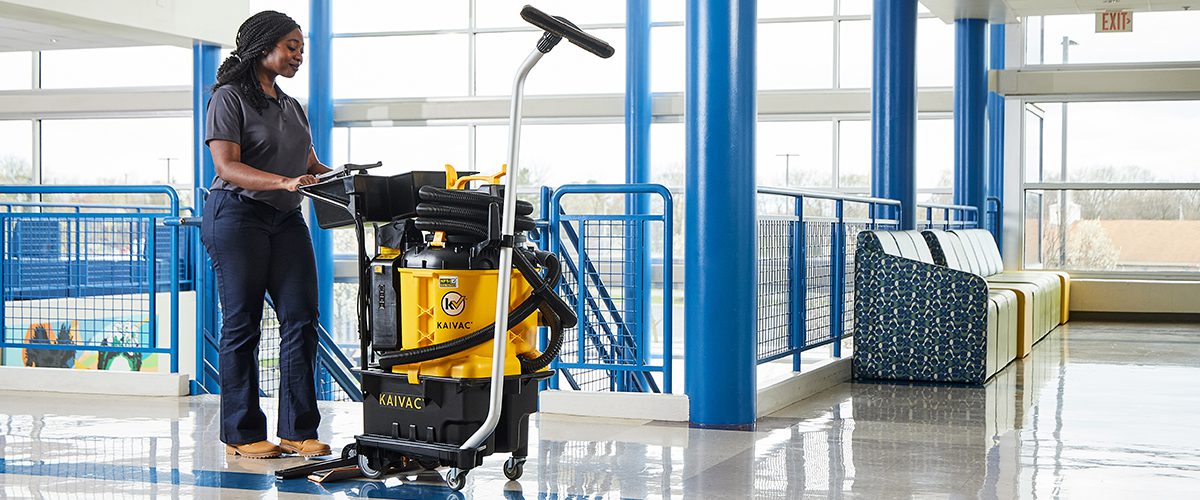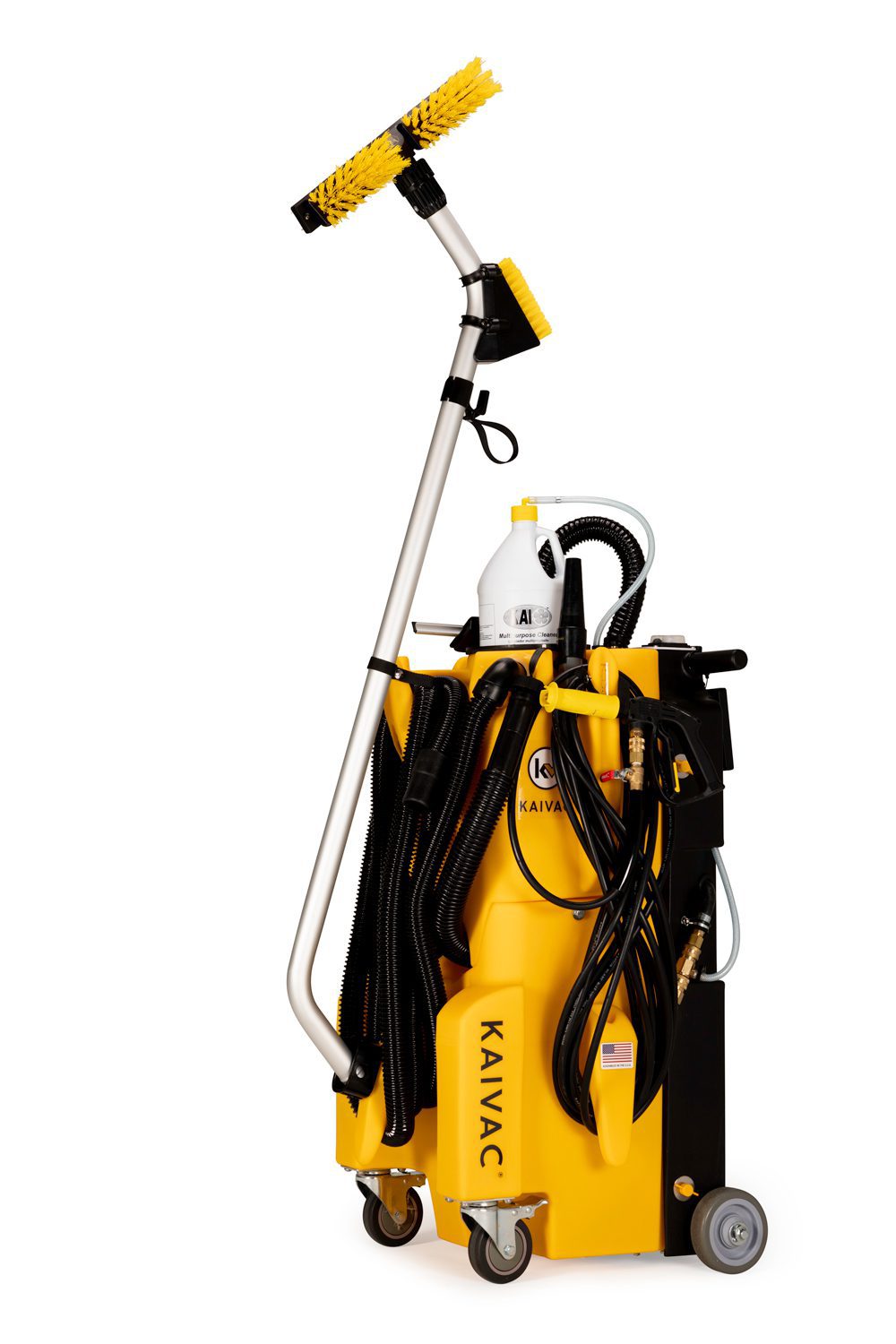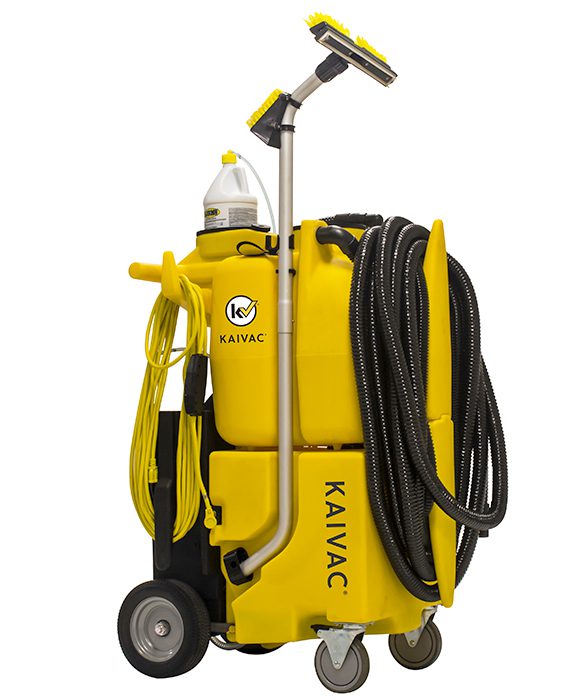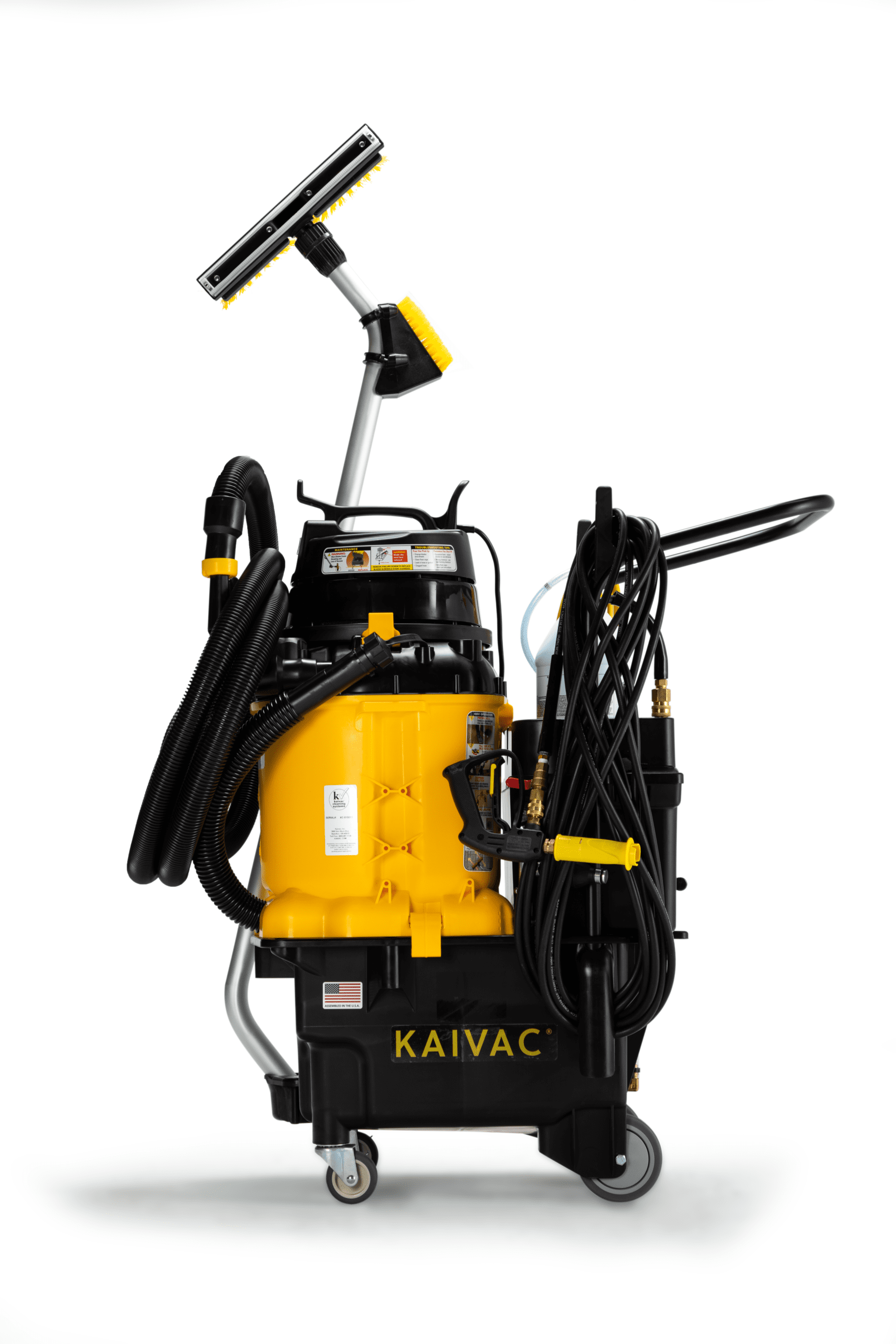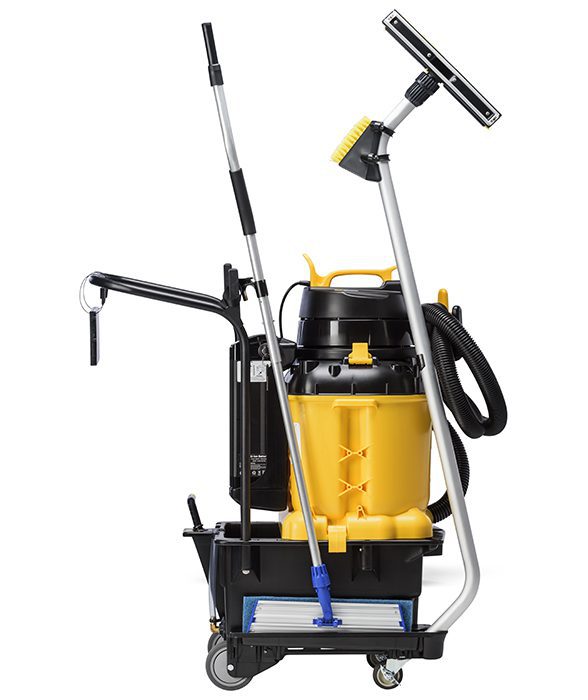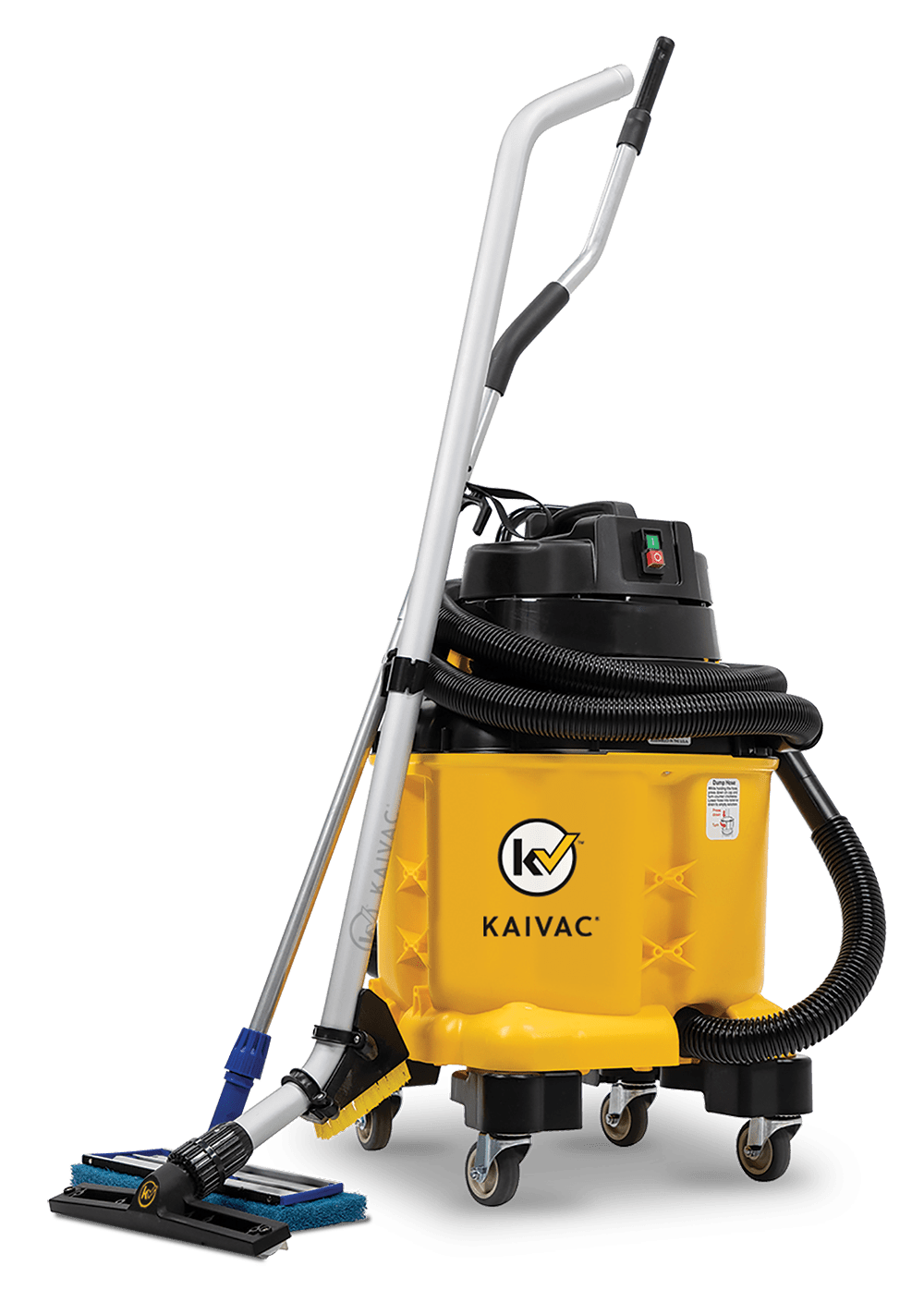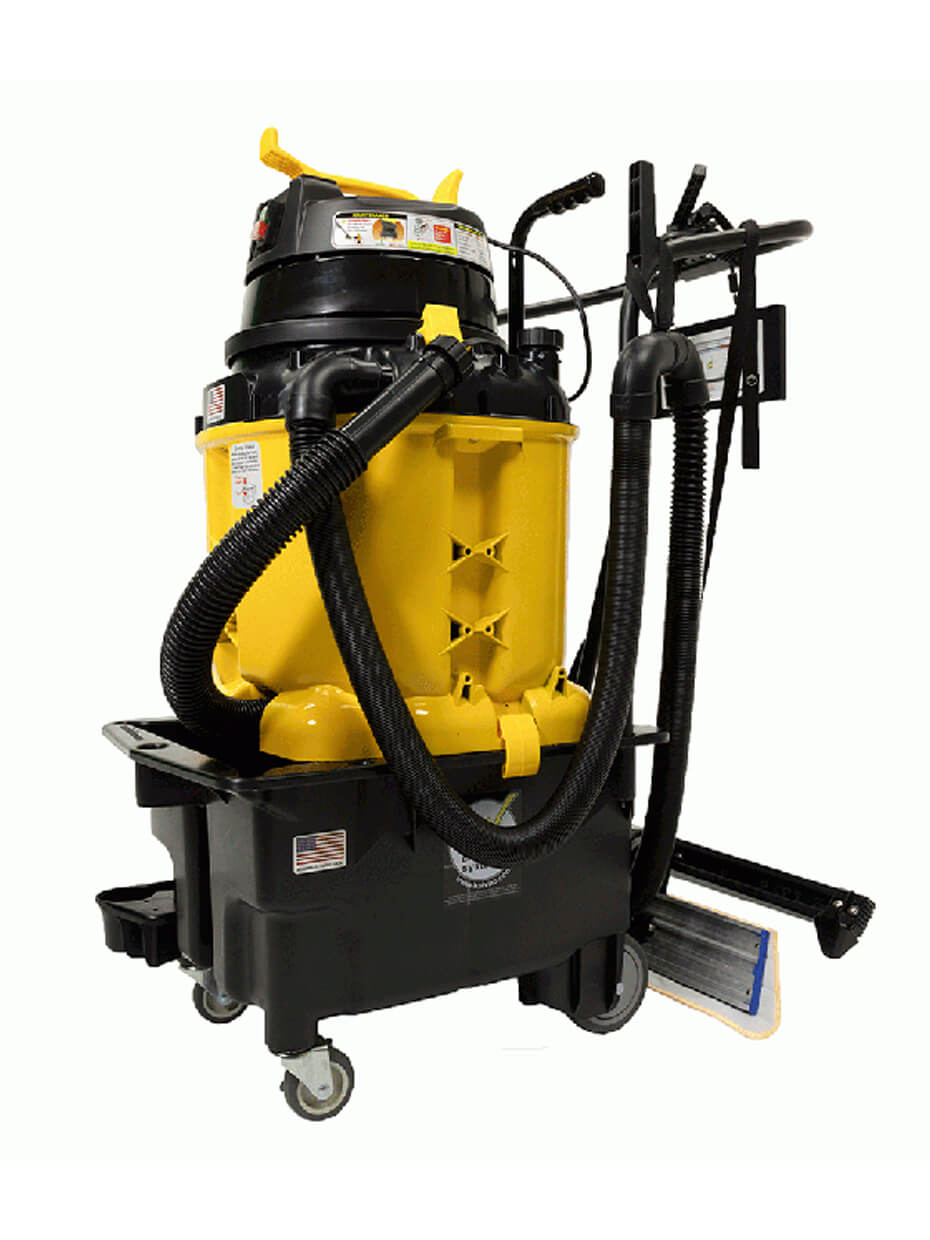Commercial buildings contain a variety of flooring types. This assortment makes for attractive, comfortable, and efficient interiors. It also complicates maintenance routines. Cleaning a greasy kitchen floor is very different than maintaining terrazzo or carpet. And tile and grout floors, particularly in a restroom, require even more specialized care.
Here’s how to maintain clean and safe flooring throughout your entire commercial building space.
How to Maintain Hard Surface Floors
Daily maintenance of hard surface floors is fairly easy—in theory. Loose, tracked in dirt has nowhere to hide so janitors simply sweep up or dry mop dust and grit then follow with a damp mop and the appropriate cleaning chemical.
In reality, it’s not that easy. The size of these floors makes manual maintenance too laborious. Imagine sweeping and mopping the Guinness world record holding Hyatt Regency San Francisco’s lobby’s more than 17,201 square feet by hand.
Of course, most hard surface floors are not that large but are still too big to clean by sweeping and mopping. Plus, much of the tracked in dirt becomes embedded and stuck over the course of the day, making the mess even harder to remove.
That is why cleaning professionals rely on tools like the AutoVac™ Stretch from Kaivac to maintain hard surface floors. This tool cleans and dries 2,500 square feet an hour. Its recycling capabilities cuts chemical use by 66 percent and water use by 75 percent. The AutoVac Stretch costs much less than an autoscrubber and is simple to maintain.
Mixed Surface Floors
Some large area floors contain more than more material. Lobbies, atriums, and retail spaces often mix hard materials and carpet. This smart design choice breaks large spaces up into manageable zones and helps with wayfinding.
It also complicates maintenance. Cleaning these mixed surface floors often requires an autoscrubber, wide-area carpet vacuums, wet and dry mopping systems, and cannister or backpack vacuums. Keeping track of four or five different pieces of equipment is cumbersome. Training staff on them adds to the burden.
The All Floor™ from Kaivac simplifies mixed floor maintenance. With the pull of a switch the machine moves between carpet and hard surface flooring. Attachments allow staff to maneuver under furniture and around obstacles. The All Floor can also be used to spot clean carpet and upholstery, a must for busy commercial spaces.
Greasy Kitchen Floors
Commercial buildings often include kitchens. Floors in these restaurants, cafes, and cafeterias take a beating every day. Along with sustaining heavy foot traffic and rolling loads, kitchen floors get greasy. If left in place, that grease hardens into a hard, tacky mess that attracts pests.
Removing grease is not an easy job. Mops simply spread the mess around. Many cleaning professionals suggest using a deck brush to scrub the floor. However, this method pushes grease deeper into grout and tile cracks, making it impossible for a mop to remove.
That’s why many food service professionals and restaurant owners rely on the UniVac® from Kaivac to clean their kitchen floors. Workers use the UniVac to dispense degreasing cleaning chemicals. They then agitate the solution using the speed scrubber. But instead of mopping the slurry, the tool’s powerful wet vacuum sucks up the dirt and grease. Tile and grout are left clean, dry, and grease free.
The vacuum also removes hard-to-reach bits of food that has fallen behind and under equipment, further deterring pests and vermin.
Tile and Grout Floors
Tile and grout floors are restroom staples. The flooring choice is cost effective, looks good and performs well. Tile and grout can also be tricky to clean.
That is because grout, the material that joins the tile together, is porous and soaks up dirt and spills. In a restroom that means any “accidents” (urine droplets) end up trapped in the grout. This mess then attracts hungry bacteria that feed on the urine and off gas, creating bad restroom odors.
Conventional cleaning methods like mopping make the problem worse. Because it sits higher than grout, tile acts like miniature squeegees. With each pass tile pulls some dirty water out of the mop and deposits it on the grout. That slurry re-feeds the bacteria resulting in more bad odors and an overall unpleasant experience.
Instead of mopping, try a No-Touch Cleaning® system instead. These advanced tools from Kaivac use powerful technology to remove restroom dirt, impurities, and odors. With No-Touch Cleaning systems, custodians spray walls, fixtures, and floors with cleaning solution and then blast the solution to the floor and out of grout lines with a fresh-water spray. Finally, the machine’s powerful vacuum sucks the slurry up.
No-Touch Cleaning systems leave restroom floors clean, dry, and odor free. The process takes less time than hand cleaning with rags and mops and allows workers to remain upright.
Maintain clean and safe flooring in commercial buildings doesn’t have to be complicated. Rely on Kaivac for more floor maintenance tips.
